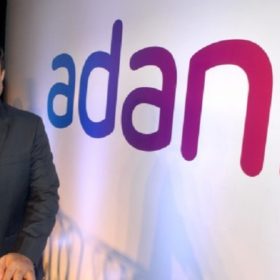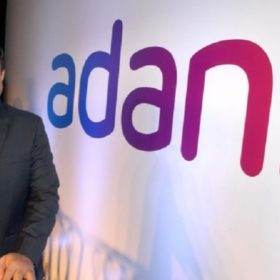Adani chief talks solar and hydrogen storage opportunity

Covid-19 crisis has provided system operators with insights on keeping the grid stable with high levels of renewable penetration. Post Covid-19, this may be the new norm, Gautam Adani said in a LinkedIn post recently.
Covid-19 presents an opportunity to pause, rethink, and design a new and faster transition to a cleaner energy future, said Adani Group chairman Gautam Adani recently in his LinkedIn post.
“The [clean energy] transition could lead to investment opportunities of US$ 19 trillion in solar, wind, battery storage, green Hydrogen, carbon management and energy efficiency by 2050, making it one of the largest global industries”—Adani quoted a recent forecast by the International Renewable Energy Agency (IRENA).
“Employment in the clean energy sector, currently at 12 million in 2020, could quadruple by 2050, while jobs in energy efficiency and system flexibility could grow by another 40 million.”
Adani believes India, in particular, is well-positioned to benefit from the transition as it is naturally endowed with very high levels of solar resources, and the long coastline makes an attractive proposition for wind power.
Falling solar prices in favour
With technology driving prices down, renewables would supplement fossil fuels in the short term and emerge as the favoured option in the long term.
Adani quoted an MIT research paper to share that the price of solar modules has dropped 99% over the past 40 years. Going by the trend, he expects prices to drop by an additional 99% over the next 40 years – probably reducing the marginal cost of electricity to zero.
“Such a reduction, in turn, will mean the coexistence of two business models – one based on fossil fuels and the other driven by renewables – both supplementing each other in the near future but the pendulum swinging decidedly in favour of renewables in the long-term,” he wrote.
Adani said many of the [power] system operators in Europe, faced with falling [electricity] demand, are learning to manage grids at a remarkably high level of renewables in the energy mix, often up to 70%.
“While the generation balance may swing back as [electricity] demand increases, the crisis has provided insights to operators on keeping the grid stable with high levels of renewable penetration. Post Covid-19, this may be the new norm,” he said.
Hydrogen storage, a potential game changer
With increasing investor confidence in solar and wind, their integration with various storage technologies will further accelerate the energy transition, said Adani, highlighting hydrogen as the predominant storage technology on the horizon.
“With the prospect of the future marginal cost of renewable energy dropping precipitously, green Hydrogen produced by the splitting water could be the game-changer.
“This Hydrogen could use much of the existing gas pipeline network for distribution, be blended with natural gas and be a green feedstock for the chemical industry. Add to this the fact that the energy density of a kilogram of Hydrogen is almost three times that of gasoline, and you have a momentum that would be near impossible to stop as Hydrogen fuel cell vehicle prices come down,” he said.


